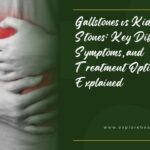Introduction: Understanding High Porosity Hair and Why It Matters
If your hair seems to soak up moisture instantly—only to feel dry again hours later—you might have high porosity hair. This hair type can be challenging to manage, but with the right routine, products, and understanding, it’s absolutely possible to restore its health and vitality.
In 2025, more people are recognizing the importance of hair porosity in their overall hair care strategy. From salon treatments to personalized regimens, high porosity hair is finally getting the attention it deserves. Whether your hair is naturally porous or has become that way due to heat, color, or chemical treatments, this guide will break down what you need to know and how to care for it—especially if you’re in the U.S., where climate and styling habits often affect hair health.
What Is High Porosity Hair?
Hair porosity refers to how well your hair absorbs and retains moisture. High porosity hair has gaps or tears in the cuticle layer, which allow moisture in easily but also let it escape quickly.
Characteristics of High Porosity Hair:
- Quickly absorbs water and products
- Feels dry or brittle, even after moisturizing
- Tangles and frizzes easily
- Air-dries very fast
- Prone to breakage or split ends
- Often the result of damage from heat, bleach, or harsh styling
While high porosity hair isn’t necessarily unhealthy, it requires specialized care to maintain strength, elasticity, and moisture balance.
What Causes High Porosity Hair?
1. Genetics
Some people are simply born with more porous hair. This is common in curlier textures, including Type 3 and Type 4 hair, which naturally have raised cuticles.
2. Chemical Damage
Hair coloring, perms, relaxers, and other chemical processes break down the cuticle and increase porosity over time.
3. Heat Damage
Frequent use of flat irons, curling wands, or blow dryers without proper protection can erode the hair shaft, leading to porosity issues.
4. Environmental Stress
Sun exposure, chlorine, hard water, and pollution can all weaken your hair’s cuticle, especially in urban areas across the U.S. where environmental stress is more intense.
How to Tell If You Have High Porosity Hair
The Water Test (Simple At-Home Method):
- Take a clean strand of dry hair.
- Drop it into a glass of water.
- Wait for 3–5 minutes.
Result:
- If the hair sinks quickly, you likely have high porosity hair.
- If it floats, your hair may be low porosity.
- If it slowly moves downward, you likely have medium/normal porosity.
While this test is a quick guide, it’s not always conclusive. Pay attention to how your hair behaves with moisture and products as well.
Caring for High Porosity Hair: What Works in 2025
Moisture Retention Is Key
High porosity hair craves moisture—but it loses it just as fast. In 2025, the focus is on layered moisture techniques and sealing strategies.
H3: Use the LOC or LCO Method
These techniques help layer and seal in moisture effectively:
- L (Liquid): Start with a water-based leave-in conditioner.
- O (Oil): Follow up with a lightweight oil like argan or jojoba to trap moisture.
- C (Cream): Finish with a rich cream for extra hydration (or reverse the oil and cream steps in the LCO method, depending on your hair’s needs).
Best Products for High Porosity Hair in the U.S. Market (2024–2025)
Look for products that are:
- Protein-enriched (to repair gaps in the cuticle)
- Humectant-free during high humidity (to prevent frizz)
- pH-balanced to help smooth the hair cuticle
Recommended Ingredients:
- Hydrolyzed protein (e.g., keratin, silk protein)
- Butters like shea or mango
- Heavy oils like castor or olive oil
- Aloe vera (for hydration and healing)
Brands with U.S. Popularity in 2025:
- Mielle Organics
- TGIN (Thank God It’s Natural)
- Briogeo
- Camille Rose
Look for the “high porosity hair” label or product line to ensure you’re getting the right formulation.
Wash and Deep Condition Wisely
Overwashing can strip moisture, but under-washing can cause product buildup.
- Shampoo 1–2 times per week with a sulfate-free cleanser.
- Clarify once a month to remove buildup.
- Deep condition weekly with a protein-moisture balancing formula.
According to the American Academy of Dermatology, using moisturizing shampoos with pH under 5.5 helps protect the scalp barrier and maintain cuticle health. Source: AAD.org
Protect and Style for Porosity
Protective Styles That Work
- Twists
- Braids
- Buns
- Bantu knots
These styles reduce exposure to the elements and minimize manipulation.
Nighttime Routine
- Use a silk or satin bonnet or pillowcase
- Braid or twist hair before bed to prevent tangling
- Apply a nighttime oil or leave-in to lock in hydration
Common Mistakes to Avoid
- Using glycerin-heavy products in high humidity – can draw moisture out of the hair.
- Skipping protein treatments – leads to weak strands.
- Flat ironing frequently without protection – worsens porosity.
- Over-relying on oils without hydrating first – can make hair feel greasy but dry underneath.
U.S. Trends in High Porosity Hair Care (2024–2025)
1. Personalized Hair Diagnostics
More salons and online platforms now offer porosity testing kits and AI-powered hair analyses to recommend product regimens based on your hair type and environmental exposure.
2. Clean Beauty and Ingredient Transparency
Consumers in the U.S. are prioritizing clean-label, non-toxic ingredients. In 2025, new FDA labeling regulations require clearer ingredient disclosures on hair care products marketed as “natural” or “organic.”
3. Climate-Specific Formulations
Brands are launching products tailored to U.S. regions (humid South, dry Southwest, etc.) to address regional porosity challenges caused by climate.
Frequently Asked Questions
Can high porosity hair be reversed?
You can’t change your natural porosity permanently, but you can manage the damage and improve the health and function of your hair.
Is protein always necessary?
Yes, but in balanced doses. Too much protein can make your hair brittle, so alternate with moisturizing treatments.
How long does it take to see improvement?
With consistent care, many people see noticeable changes in 4–8 weeks, especially in softness, shine, and breakage reduction.
Conclusion: Love Your High Porosity Hair—The Right Way
Managing high porosity hair is about understanding its needs and giving it consistent, intentional care. With the right knowledge, you can transform fragile, frizzy hair into strong, hydrated, and defined strands.
From choosing protein-rich products to layering your moisture properly and protecting your hair from daily stressors, these small steps add up to a big difference in your hair health.
If you’ve been struggling with frizz, breakage, or constant dryness, it’s time to take control. Start by identifying whether you have high porosity hair, then build a simple care routine that fits your lifestyle. Don’t wait—your healthiest hair is just a few steps away.
About ExploreHealthToday.com
ExploreHealthToday.com was created to be a one-stop resource where readers can find up-to-date, well-researched articles on a variety of health topics. From nutrition and wellness to lifestyle and mental health, we strive to provide reliable information to help you make informed decisions about your well-being.
We believe that good health starts with good information, and our mission is to empower our readers with knowledge they can trust.
Visit us at ExploreHealthToday.com to learn more.





